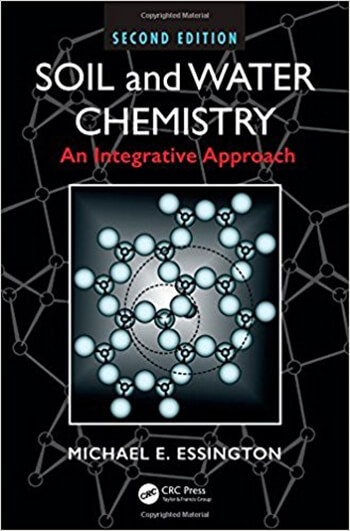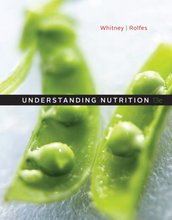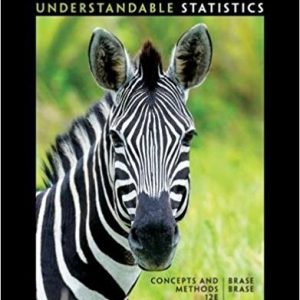Soil and Water Chemistry An Integrative Approach 2nd Essington Solution Manual

Product details:
- ISBN-10 : 9781466573154
- ISBN-13 : 978-1466573154
- Author: Michael E. Essington
The second edition of a bestseller, Soil and Water Chemistry: An Integrative Approach maintains the balanced perspective that made the first edition a hugely popular textbook. The second edition includes new figures and tables, new chapters, and expanded exercises in each chapter. It covers topics including soil chemical environment, soil minerals, soil organic matter, cation exchange, oxidation-reduction, mineral weathering and solubility, surface chemistry and adsorption reactions, acidity and salinity in soil materials, and chemical thermodynamics applied to soil systems.
Table contents:
Chapter 1 Soil Chemical Environment: An Overview 1
1.1 Phases and Chemical Processes in Soil 1
1.1.1 Intraphase Soil Processes 3
1.1.2 Interphase Soil Processes 4
1.2 Elements in the Soil Environment: Their Concentrations, Speciation, and General Behavior 6
1.2.1 Elements in Soils 6
1.2.2 Speciation and General Behavior 11
1.2.2.1 Groups IA and IIA: The Alkali and Alkaline Earth Elements 12
1.2.2.2 Group VIII: The Halides 14
1.2.2.3 Group IIIB: B and Al 14
1.2.2.4 Group IVB: C, Si, and Pb 15
1.2.2.5 Group VB: N, P, As, and Sb 17
1.2.2.6 Group VIB: O, S, and Se 19
1.2.2.7 Groups IVA through IB: Transition Elements 21
1.2.2.8 Group IIB: Zn, Cd, and Hg 27
1.2.2.9 Group IIIA: Sc, Y, and the Lanthanides (La, Ce, and Nd) 29
1.3 Units and Conversions 32
1.3.1 International System of Units 32
1.3.2 Unit Conversions 34
1.4 Heterogeneity of Soil Chemical Characteristics 37
1.4.1 Descriptive Statistical Properties 38
1.4.2 Geostatistics 41
1.4.2.1 Variograms 42
1.4.2.2 Interpolation by Kriging 46
Exercises 49
References 53
Chapter 2 Soil Minerals 55
2.1 Chemical Bonds 55
2.2 Pauling’s Rules 58
2.3 Crystal Structure 63
2.4 Silicate Classes 65
2.4.1 Nesosilicates 67
2.4.2 Sorosilicates 68
2.4.3 Cyclosilicates 69
2.4.4 Inosilicates 69
2.4.5 Phyllosilicates 70
2.4.6 Tectosilicates 73
2.5 Clay Mineralogy 79
2.5.1 Dana’s System of Mineral Classification: Phyilosilicates 79
2.5.2 AIPEA System of Phyllosilicate Classification 82
2.5.2.1 Division 1:1 Phyllosilicate Minerals 82
2.5.2.2 Division 2:1 Phyllosilicate Minerals 87
2.5.2.3 Interstratified Layer Silicates 102
2.6 Hydrous Metal Oxides 104
2.6.1 Hydrous Aluminum Oxides 104
2.6.2 Hydrous Iron Oxides 107
2.6.3 Hydrous Manganese Oxides 109
2.6.4 Allophane and Imogolite 112
2.7 X-Ray Diffraction Analysis 113
2.7.1 Principles 113
2.7.2 Miller Indices 117
2.7.3 Clay Mineral Characterization 119
Exercises 124
References 127
Chapter 3 Chemical Weathering 129
3.1 Hydrolysis and Oxidation 129
3.2 Balancing Chemical Reactions 133
3.3 Mineral Stability: Primary Silicates in the Sand- and Silt-Sized Fractions 136
3.4 Mineral Stability: Clay-Sized Fraction 139
3.5 Weathering and Formation Characteristics of the Phyilosilicates 140
3.5.1 Mica 141
3.5.2 Chlorite 148
3.5.3 Vermiculite 149
3.5.4 Smectite 150
3.6 General Weathering Scheme for the Phyilosilicates 151
Exercises 153
References 154
Chapter 4 Organic Matter in Soil 155
4.1 Determination of Soil Organic Carbon Concentrations 157
4.2 Organic Functional Groups: A Review 159
4.3 Nonhumic Substances 165
4.3.1 Carbohydrates 165
4.3.2 Nitrogen, Sulfur, and Phosphorus Compounds 169
4.3.2.1 Nitrogen Compounds 170
4.3.2.2 Sulfur Compounds 173
4.3.2.3 Phosphorus Compounds 174
4.3.3 Lipids 175
4.3.4 Lignins and Other Refractory Biomolecules 177
4.4 Humic Substances 179
4.4.1 Fractionation and Isolation of Humic Substances 180
4.4.2 Genesis of Humic Substances 181
4.4.2.1 Sugar-Amine Theory 181
4.4.2.2 Lignin-Protein Theory 182
4.4.2.3 Polyphenol Theory 183
4.4.2.4 Self-Aggregation Theory 184
4.4.3 Chemical and Structural Characteristics of Humic Substances 187
4.4.3.1 Elemental Content 187
4.4.3.2 Functional Groups and Structural Components 191
4.4.3.3 Molecular Mass and Configuration 197
Exercises 201
References 204
Chapter 5 Soil Water Chemistry 207
5.1 Nature of Water 207
5.2 Ion Hydration 209
5.3 Electrolyte Solutions 213
5.4 Hydrolysis of Cations 221
5.5 Lowry-Brønsted Acids and Bases 226
5.6 Complex Ions and Ion Pairs 232
5.6.1 Stability of Soluble Complexes 233
5.6.2 Irving and Williams Series 236
5.6.3 Metal-Fulvate Interactions 238
5.7 Ion Association Model 243
5.8 Ion Speciation in Soil Solutions 251
5.8.1 Acid Soil Solutions 251
5.8.2 Alkaline Soil Solutions 252
5.9 Qualitative Aspects of Ion Speciation 256
5.10 Soil Water Sampling Methodologies 260
5.10.1 In Situ Soil Water Sampling 260
5.10.2 Ex Situ Soil Water Sampling 265
5.10.3 Surface Runoff Sampling 266
5.11 Methods of Chemical Analysis: Elemental Analysis 269
5.11.1 Atomic Spectrometry 270
5.11.1.1 Flame Atomic Absorption Spectrophotometry 271
5.11.1.2 Atomic Emission Spectrometry 275
5.11.1.3 Graphite Furnace Atomic Absorption Spectrophotometry 276
5.11.1.4 Hydride Generation Atomic Absorption Spectrophotometry 277
5.11.2 Inductively Coupled (Argon) Plasma Atomic Emission Spectrometry 278
5.11.3 Inductively Coupled (Argon) Plasma Mass Spectrometry 281
Exercises 282
References 285
Chapter 6 Mineral Solubility 289
6.1 Mineral Solubility: Basic Principles 289
6.1.1 Mineralogical Controls on Ion Activities in Soil Solutions 291
6.1.2 Ion Activity Product and Relative Saturation 294
6.2 Application of Mineral Solubility Principles: Impediments 297
6.2.1 Estimation of Standard Free Energies of Formation 299
6.2.2 Metastability and the Step Rule 303
6.3 Deviation of Ksp from Kdis 304
6.3.1 Poorly Crystalline and Macrocrystalline Solids 304
6.3.2 Solid Solutions 306
6.4 Mineral Solubility and Solution Composition 309
6.5 Stability Diagrams 311
6.5.1 Activity Diagrams 312
6.5.2 Activity Ratio Diagrams 315
6.5.3 Temperature Dependence of the Equilibrium Constant 317
6.5.4 Stability of Zn-Bearing Minerals as a Function of Temperature: Application of the van’t Hoff Equation 321
6.5.5 In Situ Stabilization: Observed and Predicted Transformations of Metallic Lead in Alkaline Soil 328
6.5.6 Predominance Diagrams 334
6.6 Predicting Solution Composition 340
Exercises 342
References 347
Chapter 7 Oxidation-Reduction Reactions in Soils 349
7.1 Electron Activity and Stability of Water 350
7.2 Redox Potential Measurements 354
7.2.1 Platinum Electrode System 354
7.2.2 Shortcomings of the Platinum Electrode System 357
7.3 Redox Status in Soils 359
7.3.1 Reduction-Oxidation Sequences in Soils 360
7.3.2 Influence of Redox on Nonelectroactive Elements 364
7.3.3 Redox Zones 365
7.4 pe-pH Predominance Diagrams 366
7.4.1 Construction of pe-pH Diagrams: The Cr-H2O System 368
7.4.2 Examples of pe-pH Diagrams for Redox-Sensitive Elements 372
7.4.2.1 Iron and Manganese 373
7.4.2.2 Selenium 375
7.4.2.3 Arsenic 377
Exercises 379
References 381
Chapter 8 Surface Chemistry and Adsorption Reactions 383
8.1 Surface Functional Groups and Complexes 383
8.1.1 Inorganic Soil Particle Surfaces and the Source of Charge 384
8.1.1.1 Permanent Structural Surface Charge 385
8.1.1.2 pH-Dependent Surface Charge 387
8.1.2 Surface Complexes 392
8.2 Solid-Solution Interface: A Microscopic View 393
8.2.1 Surface Charge Density 394
8.2.2 Points of Zero Charge 398
8.2.3 Electric Double Layer 402
8.3 Quantitative Description of Adsorption 408
8.3.1 Adsorption Isotherm 409
8.3.2 Adsorption Isotherm Models 413
8.3.3 Linear Partition Theory 426
8.3.4 Adsorption Kinetics and Desorption Hysteresis 438
8.3.5 Influence of Temperature on Adsorption: Thermodynamic Evaluations 444
8.4 Specific Retention of Metals and Ligands 447
8.4.1 Metals and Proton Exchange Reactions 449
8.4.2 Ligands and Ligand Exchange Reactions 453
8.5 Ligand Effects on Metal Adsorption 456
8.6 Organic Surface Functional Groups and Organic Molecular Retention Mechanisms 458
8.6.1 Organic Surface Functional Groups 458
8.6.2 Molecular Retention Mechanisms 459
8.7 Surface Complexation Models 462
8.7.1 Nonelectrostatic Model 466
8.7.2 Electrostatic Effects on Adsorption 472
8.7.2.1 Constant Capacitance Model 473
8.7.2.2 Modified Triple Layer Model 477
Exercises 481
References 486
Chapter 9 Cation Exchange 489
9.1 Cation Exchange: A Beginning for Soil Chemistry 489
9.2 Qualitative Aspects of Cation Exchange 490
9.3 Cation-Exchange Capacity and Exchange Phase Composition 494
9.3.1 Exchange Phase Composition 494
9.3.2 Methods of Measuring the Cation-Exchange Capacity 497
9.3.2.1 Ammonium Acetate (pH 7 or 8.2) 498
9.3.2.2 Cation-Exchange Capacity of Arid Land Soils 499
9.3.2.3 Cation-Exchange Capacity of Acid Soils 499
9.3.2.4 Unbuffered Salt Extraction 500
9.4 Quantitative Description of Cation Exchange 500
9.4.1 Cation-Exchange Selectivity 501
9.4.1.1 Kerr Selectivity Coefficient 501
9.4.1.2 Vanselow Selectivity Coefficient 504
9.4.1.3 Rothmund and Kornfeld Selectivity Coefficient 507
9.4.1.4 Gapon Selectivity Coefficient 509
9.4.1.5 Gaines and Thomas Selectivity Coefficient 511
9.4.1.6 Davies Selectivity Coefficient 511
9.4.1.7 Regular Solution Model 513
9.4.2 Exchange Isotherms and Preference 514
9.4.3 Exchange Equilibrium Constant 522
Exercises 532
References 536
Chapter 10 Acidity in Soil Materials 537
10.1 Measurement of Soil Solution pH 538
10.1.1 pH Electrode System 538
10.1.2 Soil Solution pH 541
10.2 Chemical and Biochemical Processes That Influence Soil Solution pH 542
10.3 Acid-Neutralizing Capacity and the Quantification of Soil Acidity 548
10.4 Neutralization of Soil Acidity 550
10.5 Acid Generation and Management in Mine Spoils: The Oxidation of Pyrite 553
10.5.1 Acid Generation and Neutralization in Pyritic Wastes 554
10.5.2 Pyritic Mine Spoil Reclamation: Case Study 557
Exercises 560
References 563
Chapter 11 Soil Salinity and Sodicity 565
11.1 Sources of Salts and Problematic Elements 566
11.2 Diagnostic Characteristics of Saline and Sodic Soils 567
11.3 Irrigation Water Quality Parameters and Relationships 570
11.4 Genesis, Management, and Reclamation of Salt-Affected Soils 573
11.4.1 Saline Soils 573
11.4.2 Sodic Soils 577
11.4.2.1 Classification of Sodic Soils 578
11.4.2.2 Flocculation and Dispersion in Colloidal Suspensions 579
11.4.2.3 Genesis and Management of Sodic Soils 582
11.4.3 Sodic Mine Spoil Reclamation 584
Exercises 586
References 588
Chapter 12 Chemical Thermodynamics Applied to Soil Systems 589
12.1 Thermodynamic Soil System 589
12.1.1 Thermodynamic Processes 592
12.1.2 Variables of State and Thermodynamic Potentials 593
12.2 Gibbs-Duhem Equation and the Gibbs Phase Rule 597
12.3 Chemical Equilibria in Soils 600
12.3.1 Stabilities of Reactants and Products: Standard States 602
12.3.2 Equilibrium Constant and Thermodynamic Activity 603
12.3.3 Equilibrium Constant and Temperature 607
12.4 Ionic Species 611
12.4.1 Single-Ion Activity Coefficients and Reference States 613
12.4.2 Conditional Equilibrium Constants 615
Exercises 618
References 620
Index 623
People also search:
soil and water science
soil and water chemistry an integrative approach
soil and water relationships
soil and water chemistry an integrative approach second edition





